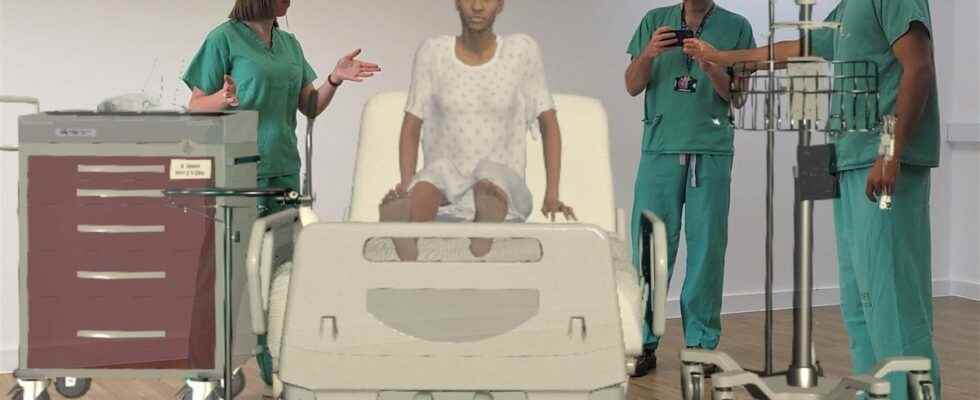Published on
Updated
Reading 1 min.
At Addenbrooke University Hospital in Cambridge, students cared for a very special patient. They were the first in the world to treat a virtual patient, in hologram. An innovative experience that could change the training of doctors.
Technology at the service of medicine
Equipped with a virtual reality headset and the Microsoft HoloLens mixed reality training app, students follow a scenario designed by the company GigXR, called “HoloScenario”. Asthma, anaphylaxis, pulmonary embolism or even pneumonia, the students take care of and treat realistic holograms of patients with different pathologies.
GigXR is currently developing other modules for cardiological and neurological diseases. Students can perform surgeries and medical diagnoses on virtual 3D patients.
Medical students at Addenbrooke’s are the first in the world to experience a new way of learning, using the latest in mixed reality holographic patients.
The new training application HoloScenarios is being developed in partnership with @Cambridge_Uni and @GIGXR1. ? pic.twitter.com/Pr3BFsqWhy
—Cambridge University Hospitals NHS (@CUH_NHS) June 27, 2022
Improve skills through more flexible training
The objective is to improve the skills of medical students in the field, especially after two years of health crisis, where their practice has been impoverished.
“With HoloScenarios, we are helping to shift education from a mentorship-based model to one where students around the world can have equal access to high-level expertise to master invention-based clinical skills. “said Dr. Arun Gupta, head of the HoloScenario project.
According to the founder of GigXR, this innovation could offer medical students training “more flexible and more cost effective than traditional methods which require more resources and investment”.
